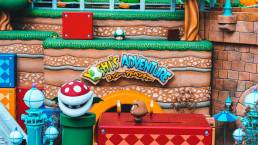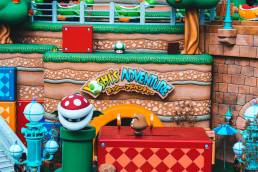Unveiling the Storytelling Secret
Behind LEGO's Success.
Imagine a world where tiny plastic bricks spark endless creativity, build lifelong memories, and even shape a global brand. That’s the magic of LEGO! But what’s the secret sauce behind their success? It all boils down to the power of LEGO’s Strategic Narrative. (Conversational aside: Remember the thrill of building a towering castle or zooming through a LEGO spaceship? Turns out, LEGO wasn’t just selling toys; they were weaving a captivating narrative!)
What is a Strategic Narrative?
A strategic narrative is like a superhero’s origin story, but for businesses. It’s the tale of how a brand came to be, its core values, and the exciting adventures (or products!) it offers. Just like a good superhero story, a strong brand narrative makes you want to be part of their mission.
The Importance of Storytelling in Business
Think about your favorite movies or books. Why do they stay with you long after the credits roll or the last page is turned? Because they tell stories that connect with us on an emotional level. Businesses can harness this same power! A well-crafted story can build trust, create a sense of community, and inspire people to choose your brand over the competition.
LEGO’s Story: A Masterclass in Strategic Narrative
LEGO’s journey began in 1932, not with plastic bricks, but with wooden toys crafted by a Danish carpenter named Ole Kirk Kristiansen. Over the years, LEGO evolved, adapting to changing times. But one thing remained constant: their commitment to storytelling. Let’s dive deeper and explore the building blocks of LEGO’s strategic narrative:
Building Blocks of a Strategic Narrative: Lessons from LEGO
Brick #1: Knowing Your Audience – Building a World for Every Playful Mind
Fun Fact: Did you know LEGO bricks haven’t changed much since 1958? They understand that “if it ain’t broke, don’t fix it!” when it comes to their core product.
LEGO’s success lies in understanding that play is universal, but its expression is diverse. That’s why they offer a vast range of themes, from LEGO City for budding architects to LEGO Friends for creative storytellers, and LEGO Technic for future engineers. By catering to different interests and age groups, LEGO ensures there’s a world waiting to be built for every playful mind!
Brick #2: Building a World, Not Just a Product – The Power of Immersion
LEGO goes beyond selling bricks; they sell entire universes. Each theme is a portal to a unique world with its own characters, stories, and challenges. Imagine battling Darth Vader in a LEGO Star Wars adventure or brewing potions at Hogwarts with LEGO Harry Potter. LEGO creates immersive experiences that spark imagination and encourage exploration.
Brick #3: Playful Engagement: Learning Through Fun
At its core, LEGO is all about learning through play. Building with LEGO bricks helps develop problem-solving skills, creativity, and fine motor skills – all while having a blast! It’s like a giant, fun experiment where you’re the scientist and the rules are up to you.
Brick #4: Adapting to Change: A Story That Grows
LEGO isn’t just about staying the same; it’s about evolving with the times. Remember when LEGO introduced video games? Or the shift to sustainable materials? LEGO has always been open to new ideas and willing to adapt its story to stay relevant. That’s because they understand that a good story is never finished; it’s always growing and evolving.
The Science Behind Strategic Narratives
You might be wondering, “What’s the science behind storytelling?” It turns out, there’s actual research that explains why stories are so powerful.
- Mirror Neurons: These brain cells help us understand and empathize with others. When we hear a story, our brains simulate the experiences of the characters, making us feel connected to them.
- Dopamine: This feel-good chemical is released when we experience something positive, like a great story. That’s why good stories can be so addictive!
- Memory: Stories help us remember information better than facts and figures. That’s why we can recall details from our favorite books or movies years later.
Real-World Examples: Companies Using Storytelling to Succeed
LEGO isn’t the only company that’s mastered the art of storytelling. Here are a few other examples:
- Apple: Think about the iconic “Think Different” campaign. Apple’s story is about challenging the status quo and inspiring creativity.
- Patagonia: Patagonia’s story is about environmental conservation and sustainability. Their products are more than just clothing; they’re a statement of values.
- Disney: Disney is a master of storytelling, from classic animated films to modern blockbusters. Their stories are filled with magic, adventure, and timeless themes.
Building Your Own Strategic Narrative: A Toolbox for Success
Now that you understand the power of storytelling, let’s explore how you can build your own strategic narrative:
- Identify Your Core Values: What does your brand stand for? What are your values? These will form the foundation of your story.
- Craft a Compelling Story: Who is your audience? What kind of stories will resonate with them? Create a narrative that speaks to their hearts and minds.
- Make it Interactive: Encourage your audience to participate in your story. Share their experiences, provide feedback, and even co-create content.
- Embrace Change: Your story will evolve over time. Be prepared to adapt and grow as your business changes.
Conclusion
As we’ve seen, storytelling is a powerful tool for building a brand that resonates with people on a deep level. By following these steps, you can create a compelling narrative that helps your business stand out and achieve long-term success.
Ready to build your own strategic narrative? Let Zamora Design help you craft a story that sticks.
Contact me if you have any questions you’d like answered!
Related Posts
November 18, 2024
Crafting the Future: OpenAI’s Strategic Narrative
Explore OpenAI's strategic narrative and discover how storytelling shapes its…
November 18, 2024
Unpacking Shopify’s Strategic Narrative: Rewriting the Rules of eCommerce
Explore how Shopify transformed from a snowboard shop to a global commerce…
November 12, 2024
Canva’s Strategic Narrative: How Design Democratization Created a $40 Billion Empire
Discover how Canva's strategic narrative empowers creativity through…
November 12, 2024
Nintendo’s Strategic Narrative: A Masterclass in Storytelling
In the ever-evolving landscape of the gaming industry, Nintendo stands as a…
Related Posts
November 18, 2024
Crafting the Future: OpenAI’s Strategic Narrative
Explore OpenAI's strategic narrative and discover how storytelling shapes its…
November 18, 2024
Unpacking Shopify’s Strategic Narrative: Rewriting the Rules of eCommerce
Explore how Shopify transformed from a snowboard shop to a global commerce…
November 12, 2024
Canva’s Strategic Narrative: How Design Democratization Created a $40 Billion Empire
Discover how Canva's strategic narrative empowers creativity through…
November 12, 2024
Nintendo’s Strategic Narrative: A Masterclass in Storytelling
In the ever-evolving landscape of the gaming industry, Nintendo stands as a…







